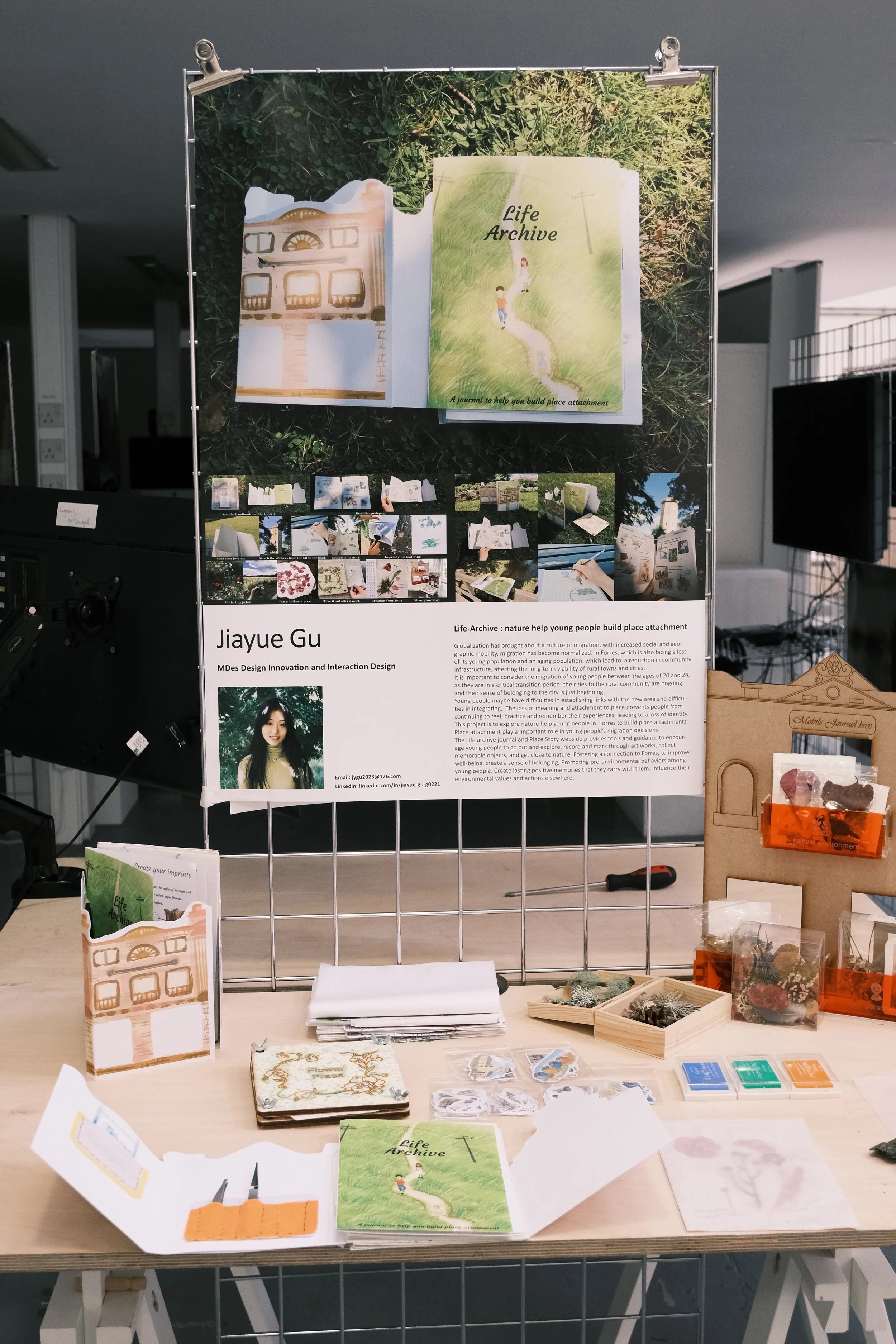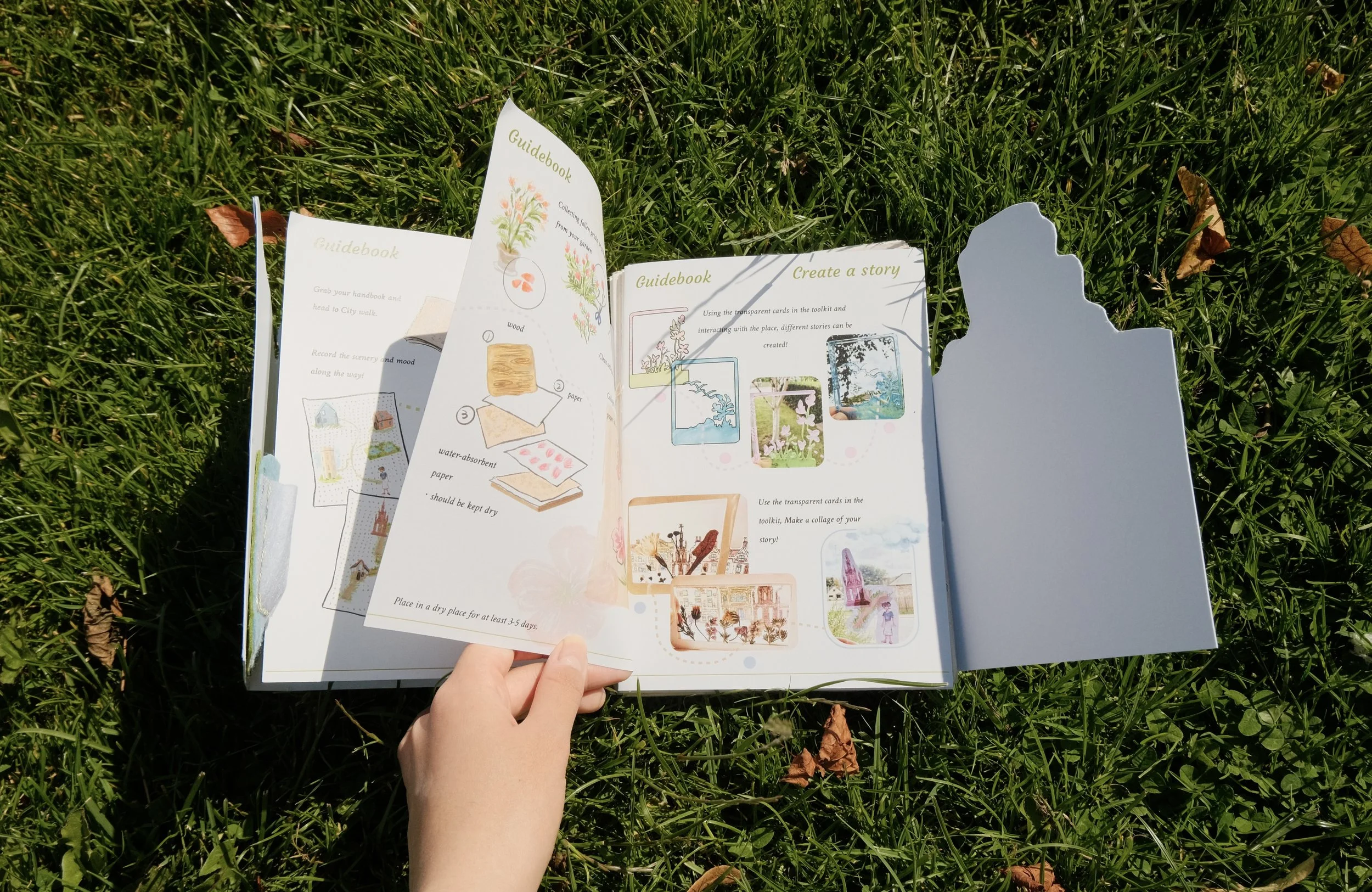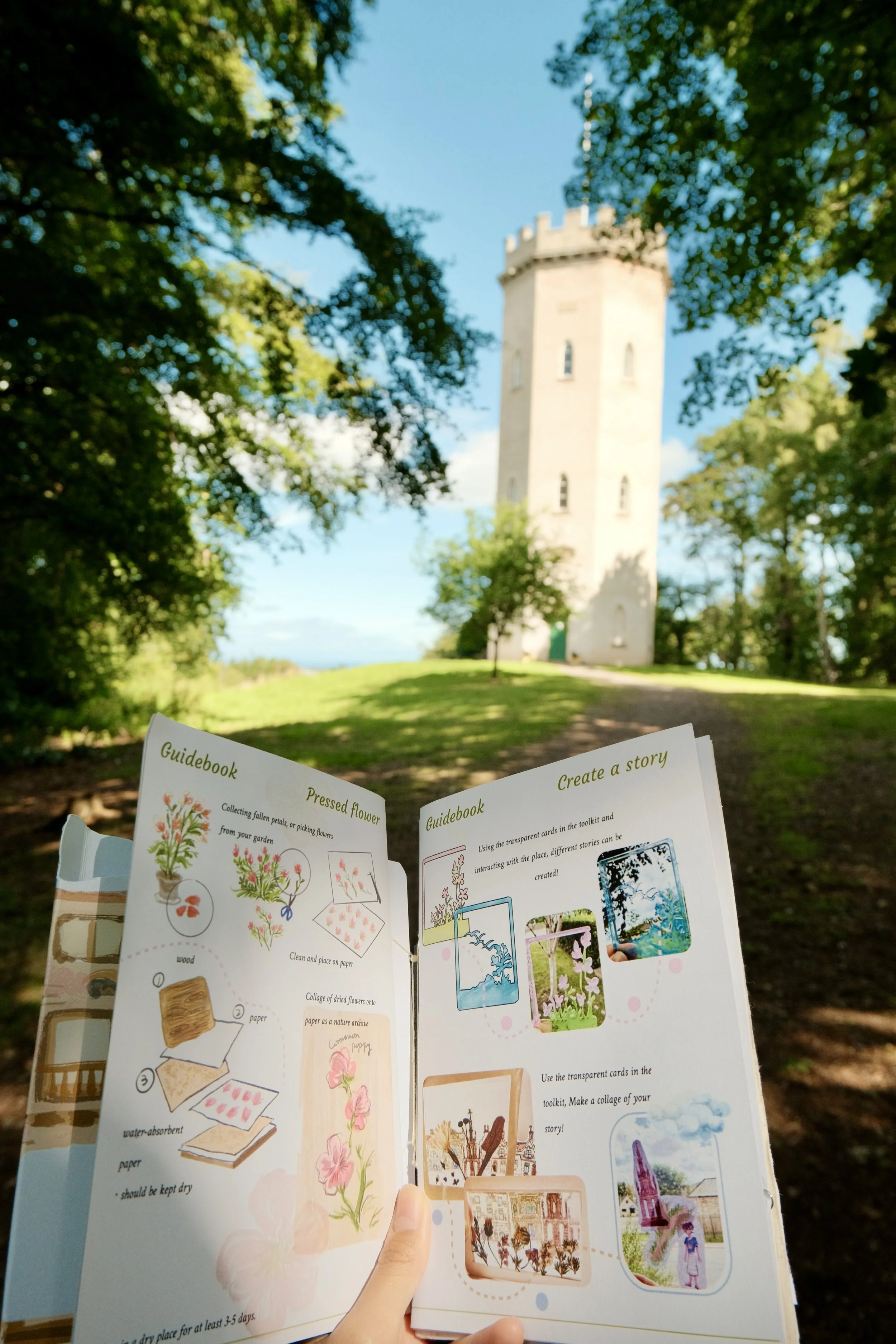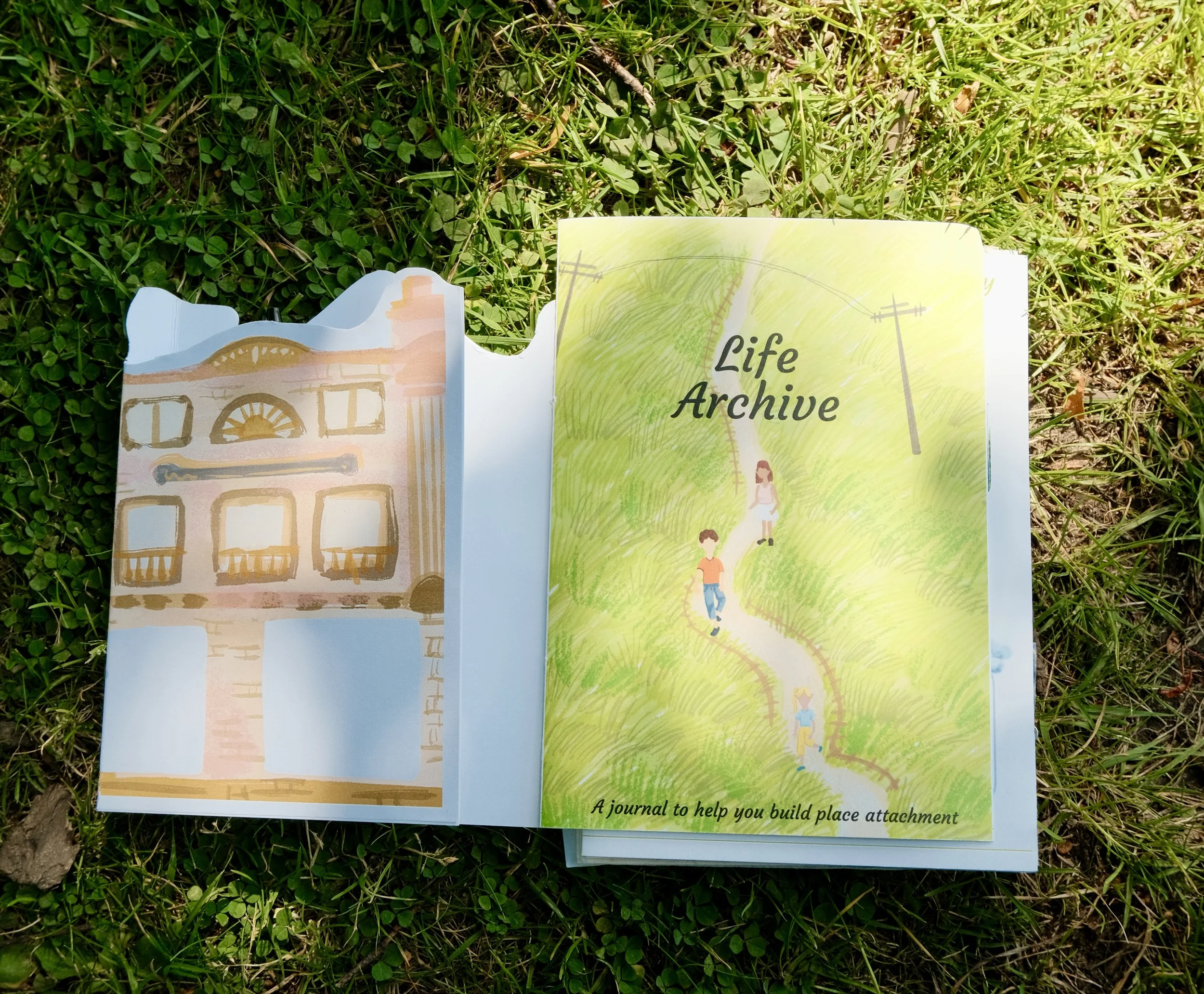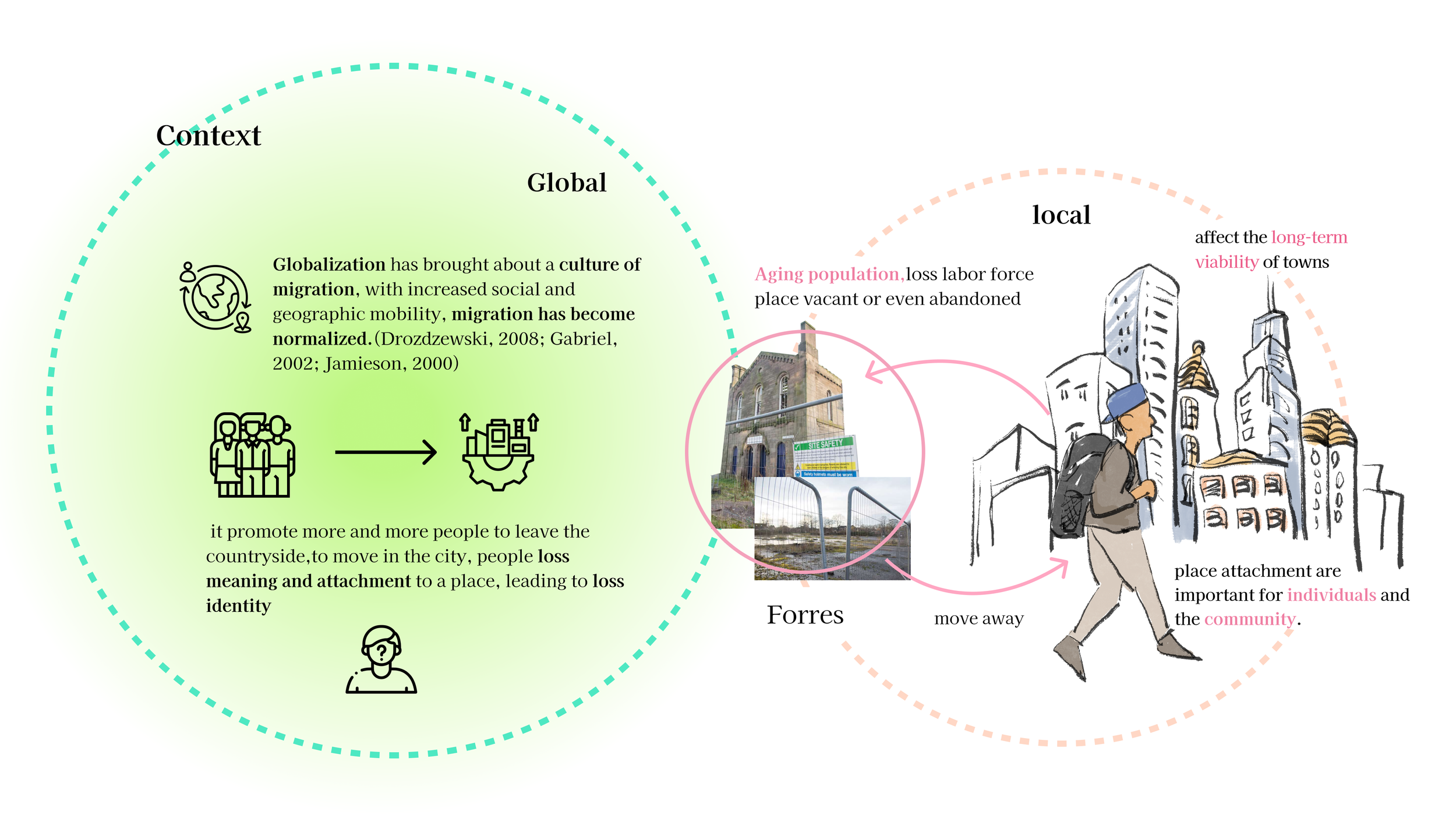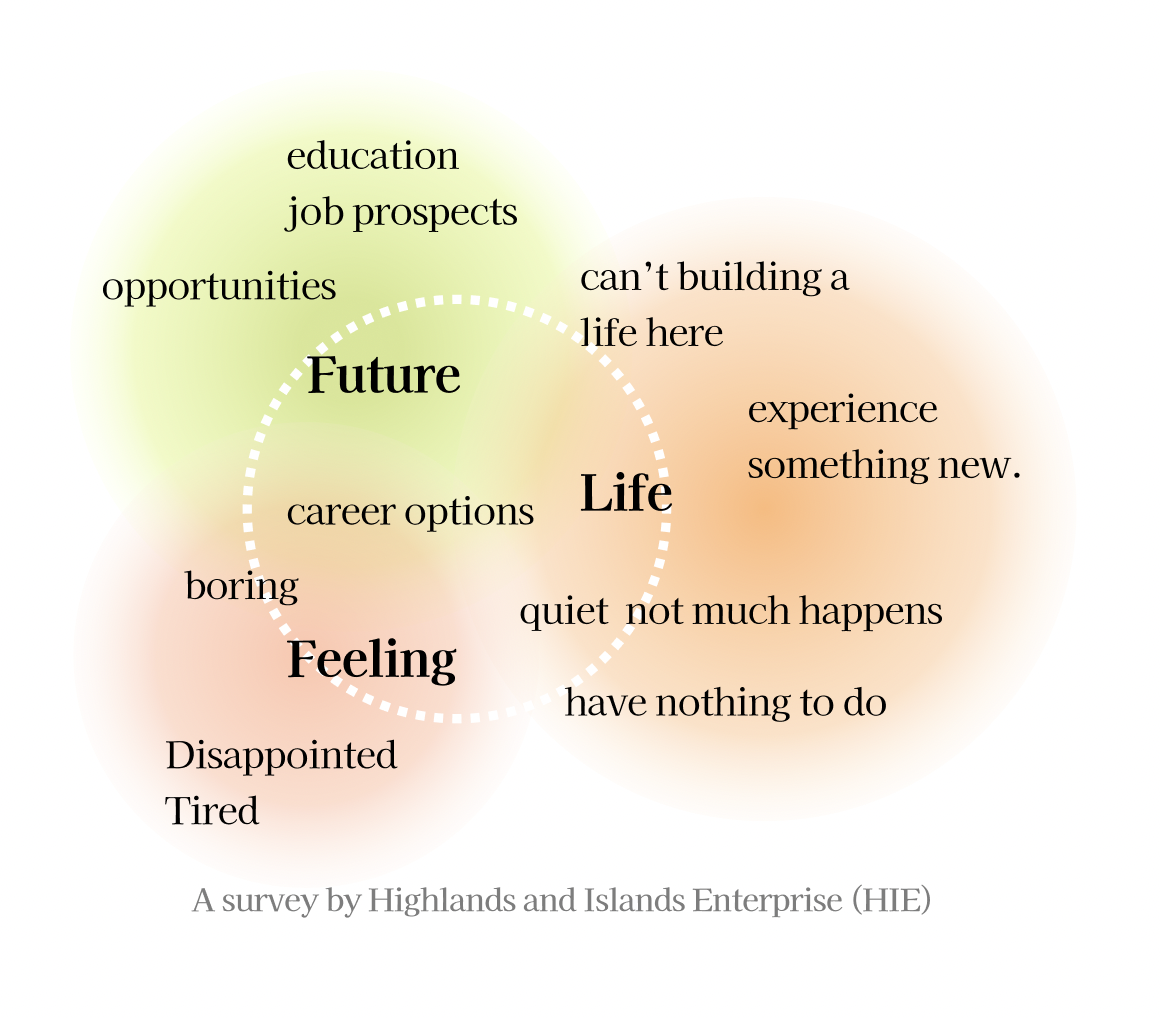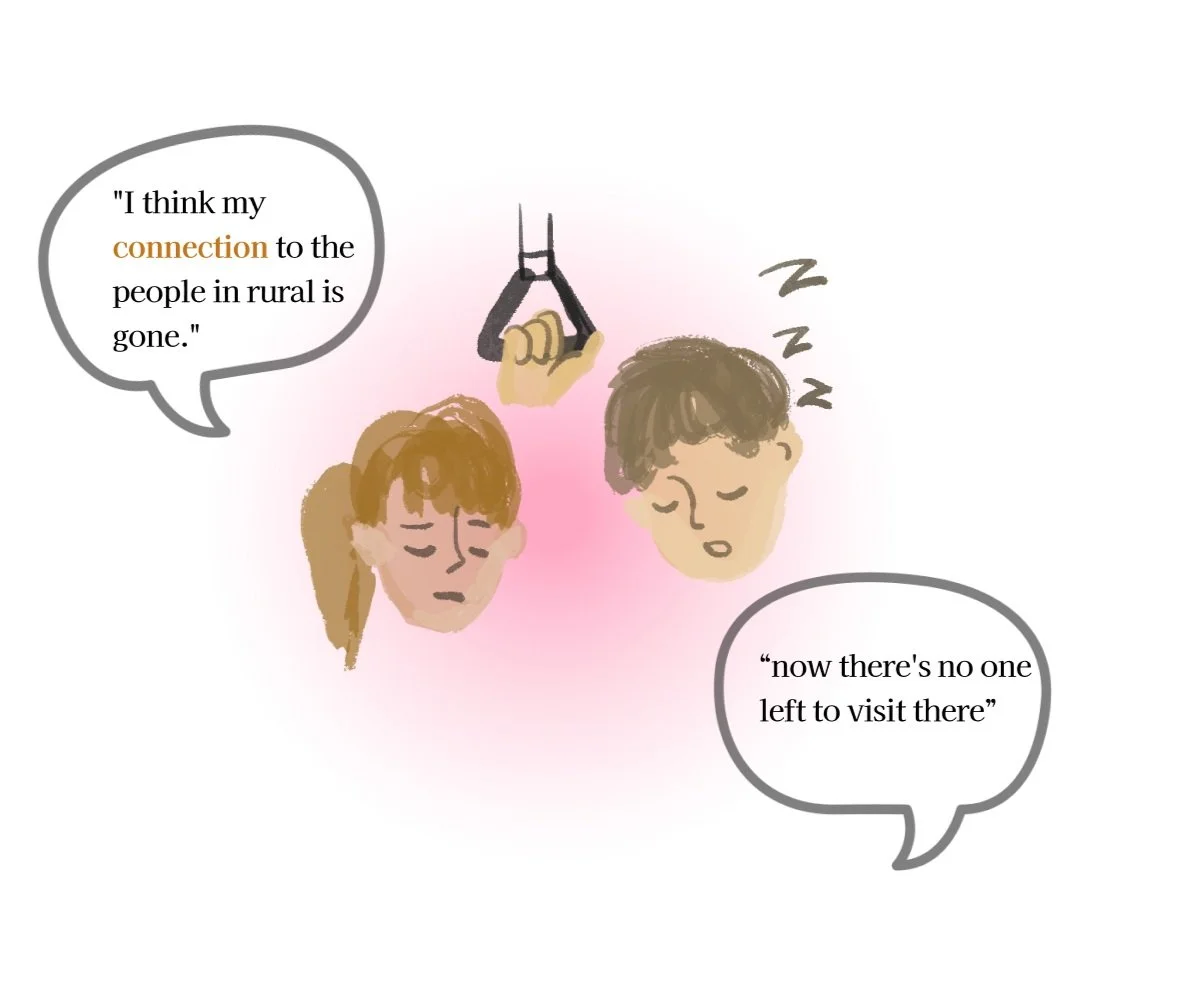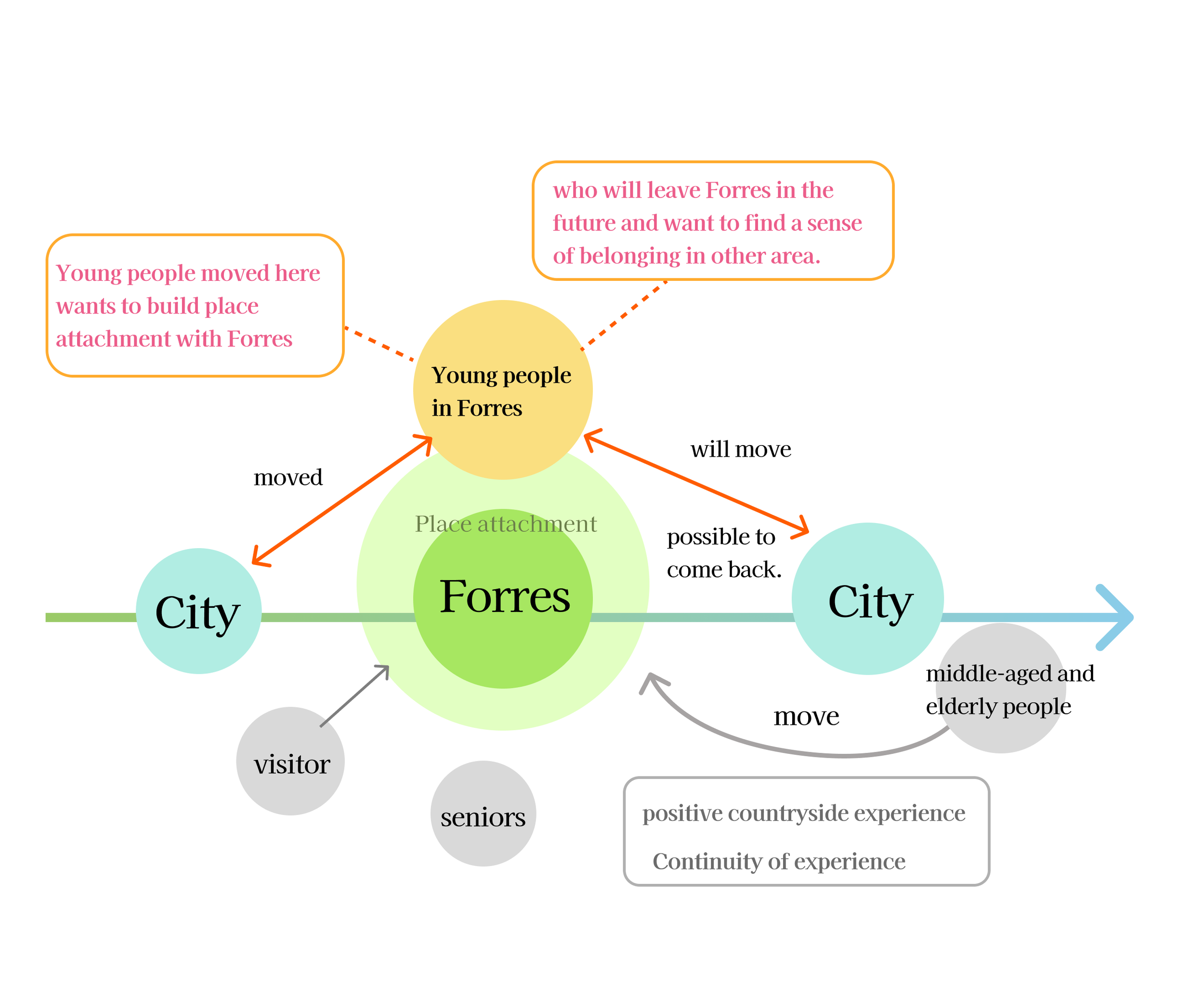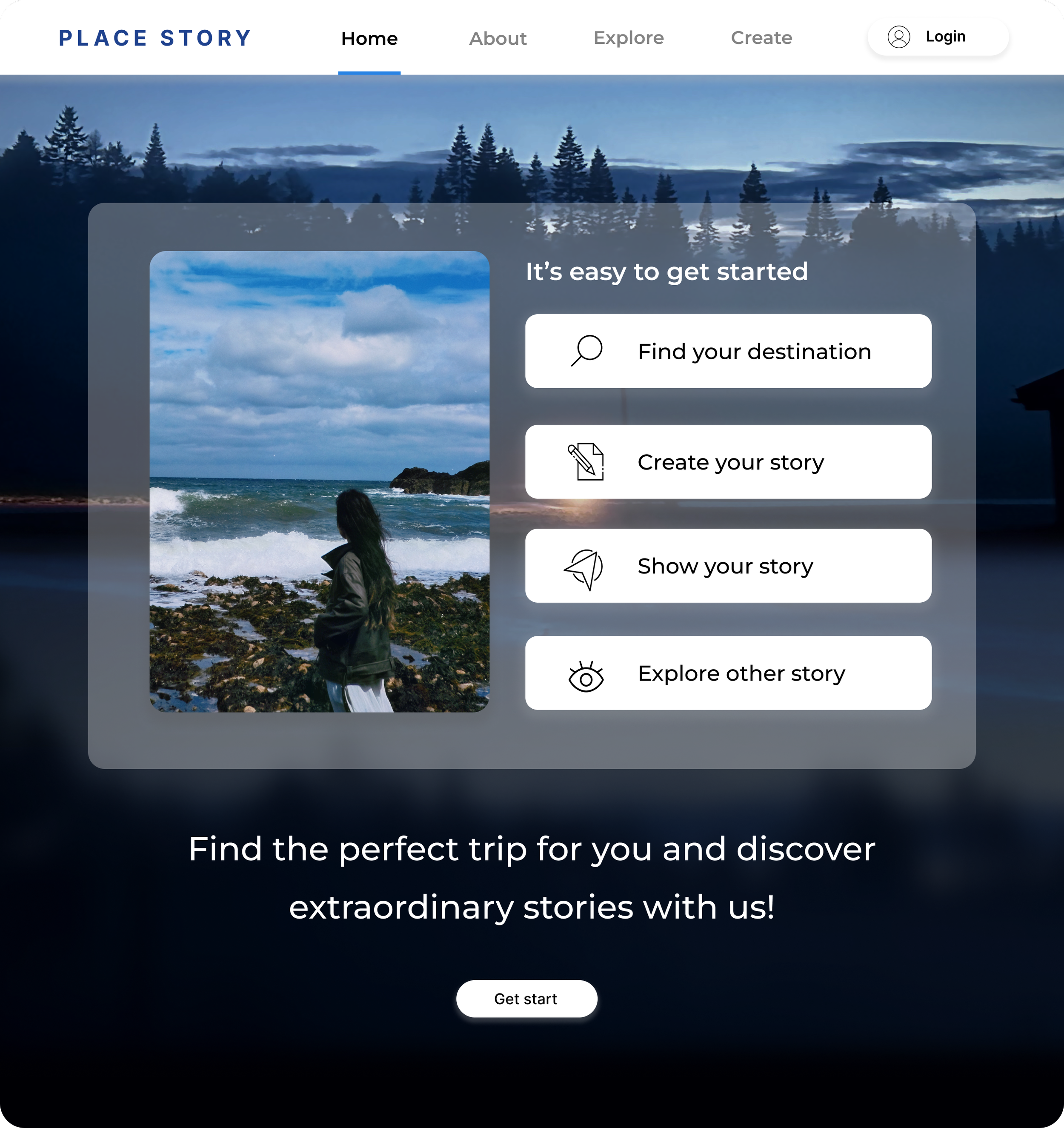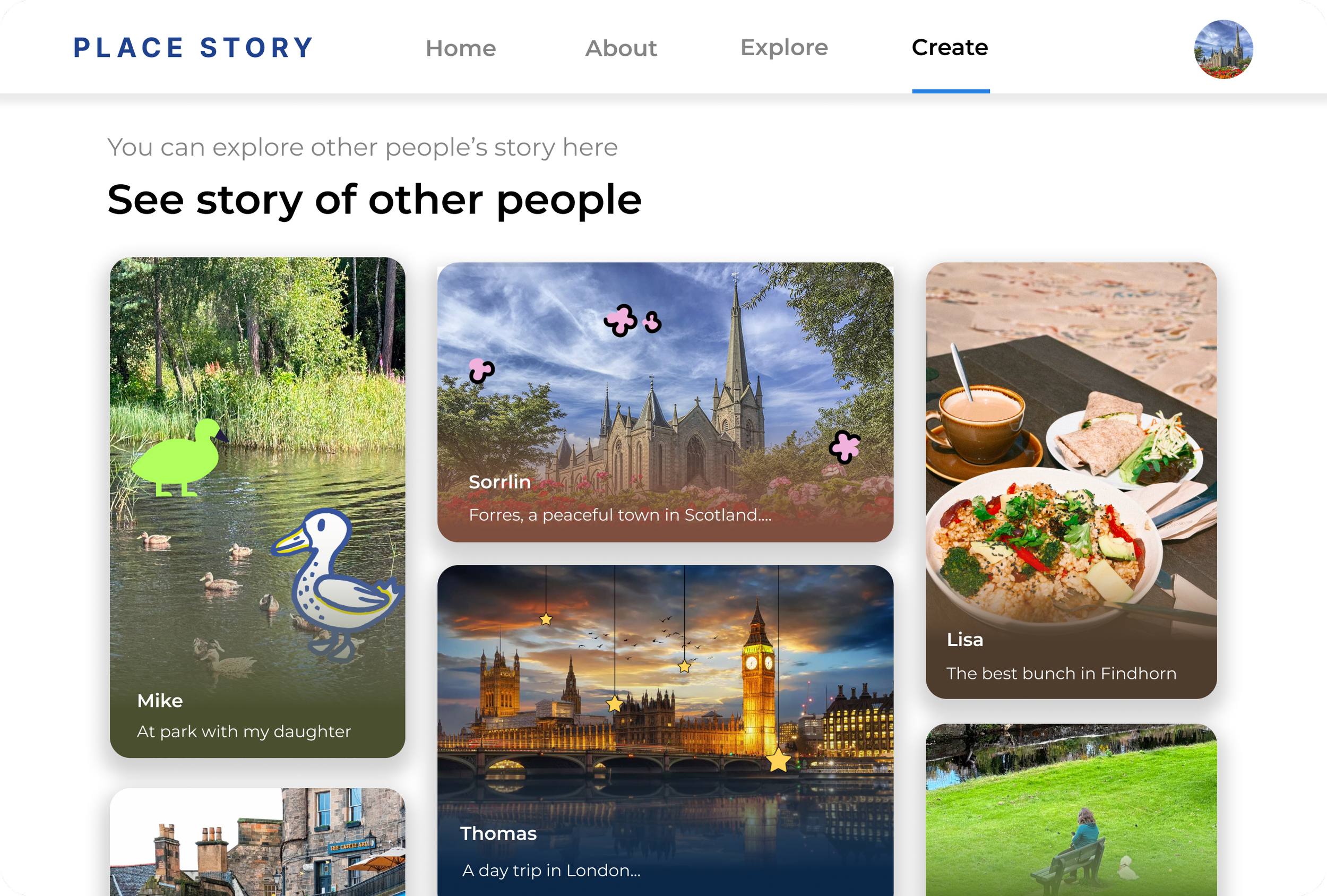Place Attachment
24–8–2024
This project is aim to discover how nature can help young people in Forres build place attachment.
Individual project
located: Forres, Scotland
Interaction design & illustration
Hand book toolkit & website
Design stakeholder: Theater Of Seven Direction, Forres and Findhorn residents
Project Background
With the develop of globalization, migration has become normalized, that promote people leave the rural to move in other place, loss the meaning and attachment of the place.
As we can see, Forres is faced with an aging population and a loss of its young population problem,which affect the viability of the town.
Desk Research
-
Place attachment
Topophilia
Identity
Culture of migration
Natural healing
The Poetics of Space
Nostalgic retrospection
Metaphors of Space
Individual and collective memories -
DeskResearch. Field Research.
Semi-structured interviews.
Thematic analysis. Observation.
EngagementTool. Co-design.
Research
-
My research began with the decline population in scotland, the problem of an ageing population and the loss of a young population is also reflected in Forres. which lead to a reduction in community infrastructure, affecting the long-term viability of rural towns and cities (Stockdale, 2004)
-
Space can be seen as abstract geometries, people give meaning to space that changed spaces into places.(Relph, 1976). At the same time, the emotional connection one made with a place, as well as the memories, values, gradually shape one's identity, Developed place attachment.(Kyle et al., 2005; Williams and Vaske, 2003)
-
personal context
community context
natural environment context
-
The important of place attachment is that for people’s physical and psychological health,to learn more about the place and build self identity
Stakeholders
-
Travelers and residents
all are non-local, changed residence several times during their young lives
-
Findhorn ecovillage staff and residents
all are non-local, changed residence several times during their young lives
-
organization, offer self-discovery activities and journeys through community performances, eco-dramas, rituals, classes and workshops
-
Learn how to deepen a sense of belonging and enhance a sense of community and place attachment through performances that incorporate theater and ecology
Interview
-
I chose semi-structured interviews because it’s more informal and free-form, less stressful for the interviewee, gave me an overview of the interviewee, and helped me to draw objective comparisons from the interviewee(Smith, Adrienne 2019)
-
I choose Street interviews because it’s one of the fastest forms of real-time data collection, facilitating the collection of both verbal and nonverbal cues, but are limited in time, as most participants are reluctant to talk for more than five minutes.
-
Understand the variability of place attachment between different groups of people and the reasons why they choose to change places when they are at different life stages, through some basic and place attachment related questions
Insight from the interview
Desk research
base the interview
In this stage I conducted more in-depth desk research, chose storytelling as the medium for my design, and identified the design user and design scenarios.
Impact of young people after immigration
Placed outside the definition of what it means to be young and cool, reinforcing the need to migrate. (Farrugia, 2014)
A sense of confusion or uneasiness from moving to the city (Farrugia, Smyth, & Harrison, 2015)
Young people may feel frustrated, go through challenging transitions with little support from friends, family and community (Stockdale, 2004)
changes within the community have made them feel like "outsiders", affects the potential of return home.(Farrugia, Smyth, & Harrison, 2015)
Define design direction
Identified user and scenarios: young people coming to Forres, and young people who will leave Forres in the future
stakeholder map
Deeper Insight
-
Migration has become normalized,especially for rural young people.
-
The leave of young people has also make areas less functional and attractive.
Functionality of places changes, and the disconnect with place makes people lose attachment to places
-
Place attachment promote young people a broader understanding of the place and responsibility for the area
Human brains are used to narrative storytelling
-
Young people move to new place may be disconnection from their past lives, and less access to the support of their community of friends and family
Continuity is especially important; our identities are shaped by experiences, helps people to find a sense of belonging
-
Young people have difficulties in establishing links with the new area , leading to problems of loss identity
Place attachment helps young people build self-identity
Young people’s ties to the rural community are ongoing and their sense of belonging to the city is just beginning
Design Opportunity
-
To help people share their own stories of place through community exploration activities
-
Showing the historical story of the space, and the exhibition of overlapping scenes in time and space
-
A toolkit for collecting things from the place people live, and recording scenes, help people build sence of belonging
-
Online community, personal and community story archives, to help people learn more about the place and explore other’s story
Co-design
-
I use co design and engagement tools to understand people's underlying needs and desires about the design opportunity, enabling users to present their stories to me in a easy way
On the idea that the people you’re designing for are your roadmap to innovative solutions. All you have to do is empathize, understand them, and bring them along with you in the design process (IDEO field guide to human-centred design, 2015)
so i design my engagement tools and invite people in forres and findhorn to co-design with me. -
Starting with personal experiences, guided by changes in time and place, ask people to show their own stories with different places. To explore the role of place attachment, tools related to connections, bonds, and feeling.
-
i find many people record their experience through journal ,and collecting things when they move,and to have connection with new place through walking and explore, and people have strong sense of cultural belonging,want to show their story in their own character
In this stage I researched existing ways to help people connect with new places and came up with four design directions based on pre-design opportunities and co-design summaries, and after evaluating them I chose two of them, prototyped and user-tested, and iterated on different types of materials
Idea outline
-
because they better fulfil the need to build a sense of belonging and attachment to place, and help young people to build their self-identity. And satisfied the individual and collective memories. Creating lasting positive memories that they carry with them, which might influence their environmental values and actions elsewhere
-
The Life archive journal encourages young people to go out explore, living by visiting. The journal toolkit help young people to record story and encourages young people to be creative and build place attachment through art forms. to have positive memories here.
-
Places Story website encourages users to run off the map, explore and create their own map. Helps users share and discover community stories and connect with new places.
Place attachment are important for individuals and the community.
Prototype & User test
-
I invited three users to participate in my user testing by using the journal kit to document one of their outdoor explorations in Forres
-
They all found the journal kit format fun, deepening their impressions of places as they explored, but preferred to keep it as a memento for themselves as opposed to mobile journals. The binding is not secure and some of the paper, materials should be changed
-
The test should be a long-term format, and due to realities such as time constraints, it is difficult to test for long-term impact and effectiveness
Design Outcome
Website
